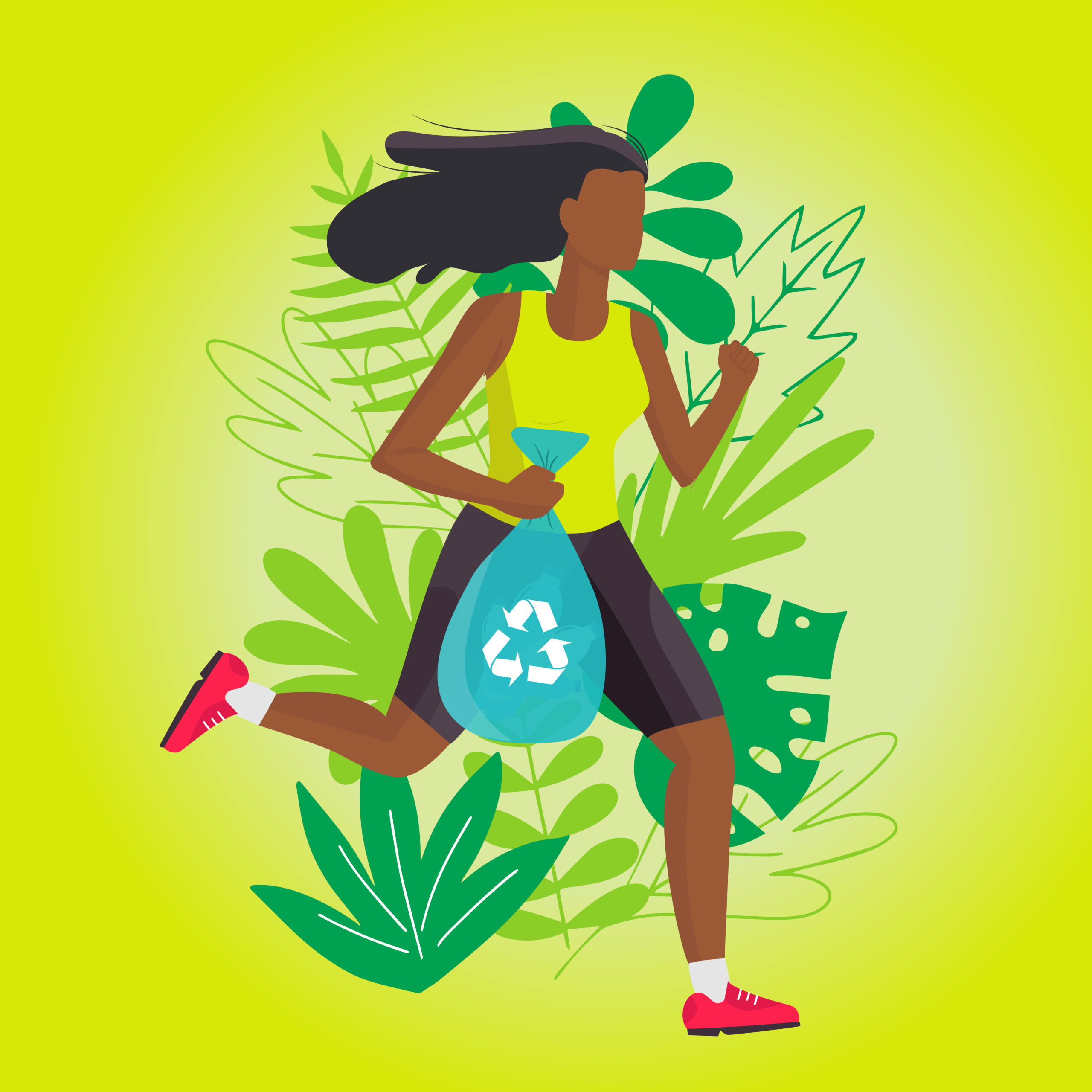If you have never heard of plogging, you’re probably not the only one. But don’t worry, we’ve taken a closer look to find out more.
Words Weronika Elantkowska
What is plogging?
Plogging is a combination of jogging while picking up litter and rubbish. It originates in Sweden around 2016, spreading to other countries in the following years, due to increased concerns about plastic pollution and contamination of the environment. Interestingly the word comes from Swedish “plocka upp”, which means picking up. This new fitness trend consists of a variety of body movements, including bending and squatting while walking, jogging or running. It’s for everyone who cares about our planet and its future. And remember you don’t need to be extremely fit to do it.
Why you should plog?
At the moment, plastic is a hot topic with the largest supermarkets banning plastics bags. Every day there is news underlining the impact of single-use plastic products. As we know, single-use plastic is not only a huge threat for us, but also it destroys our wildlife on land and in oceans. As littering has a boomerang effect, we should do our bit to ensure our surroundings are clean. Education and knowledge are key for people to acknowledge the amount of waste around them, and with acknowledgement and caring will come change. Remember small steps will make a big difference.
How to join?
Luckily, there is no membership fee to join a plogging club. You can do it by yourself, with a group of friends or family. There are also groups on social media that you can join. One of the sites has been opened by Matt Akehurst, who is now not only collecting rubbish while running, but also making jewellery from recycled wood and plastic. We spoke with Akehurst about his journey.
Good: How did your journey start and how did you find out about plogging?
Matt Akehurst: I was out walking around our neighbourhood with my wife Julie and noticed a lot of rubbish. I picked up a few pieces, and a few more. Realising there was a lot, I thought this could be a good challenge. As a runner, I thought what if I run the same 4km loop from my house and see how much I could pick up. I set a challenge to pick up 7000 pieces in 70 days. It was pretty clear I was easily going to reach this on day 40 so I upped the stakes to 10,000. Sadly, it was a disappointing success. I have carried on with the plogging and have picked up 30,000 pieces now after 1.5 years.
I found out about plogging after I had started running and picking up rubbish, I thought well I guess that is what I am doing. Plogging.
How can we convince more people to start plogging?
I think if you’re into running in the outdoors it’s just natural to pick up the odd piece of rubbish. Tip: if you are running or walking and see a rubbish bin in the distance pick up a few pieces on the way to the bin — awesome.
A lot of people feel embarrassed picking up rubbish in public, but isn’t it more shameful to walk past litter and not pick it up?
Tell us more about your recyclable jewellery.
We try and live an environmentally conscious lifestyle, and running Liberation Jewellery is a part of that. We use recycled wood, broken skateboards and bronze welding rod offcuts to make our jewellery. I have made jewellery for about three years now and went full-time last year after leaving my job as a scientist. It all started with making my first pendant out of a worn-out breadboard. I loved the process so much I just carried on making and selling at markets and online, not realising it would turn into a full-time job.


Can plogging help your fitness levels?
For me, it helps me get outdoors and clean up the beach that is in our backyard. I have lost 30kg over the last 3 years and although this is not due totally to plogging, it is a part of a healthier lifestyle I try and maintain. Whether you walk, run or cycle getting outdoors and having fun is key.
How much rubbish do you find on an average plogging outing, and how many pieces have you collected so far?
In winter it averages around 100 pieces per run and summer it is around 200. In winter I do one run per week and summer around three per week. I have just reached 30,000 pieces. Notably most of the pieces I pick up are on a one-kilometre stretch by the Waimakariri River mouth. This area is where all the rubbish accumulates due to the river washing it down and the tide also brings it in. Amounts do change due to wind, tides, floods, etc. All of my runs are posted on my Instagram page so people can see how much rubbish is collected. I want my posts not to preach but to illustrate what we are all doing to this beautiful land we stand upon. Really the only solution is not to produce so much unnecessary waste.
To check out Matt Akehurst’s profile and get your daily motivation, visit his Facebook or Instagram.





